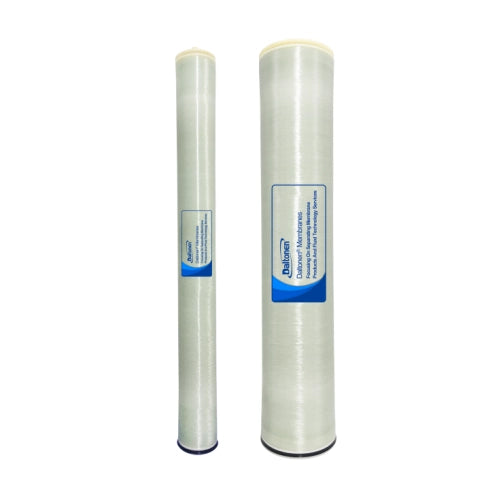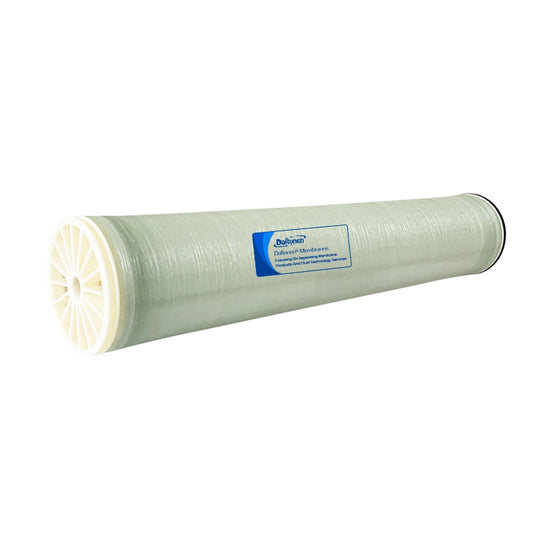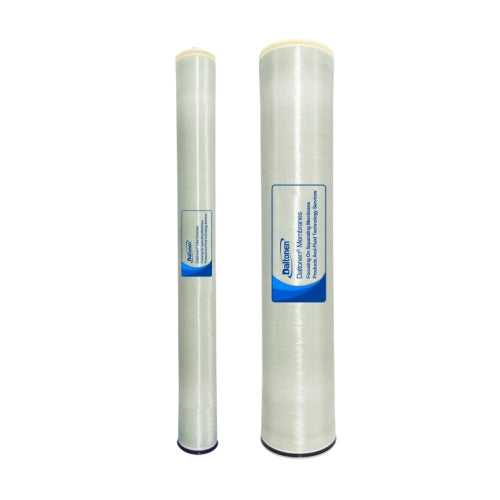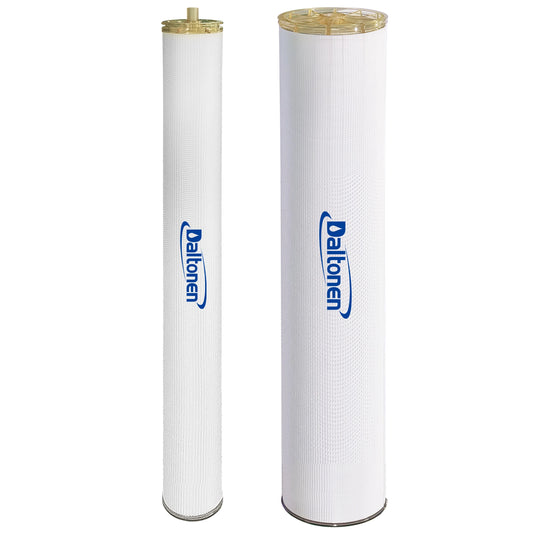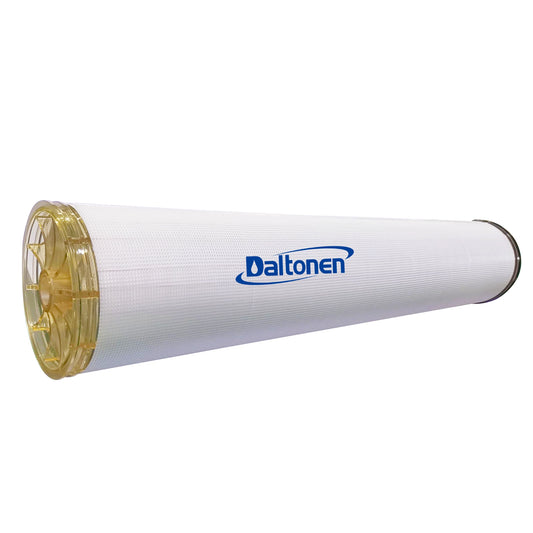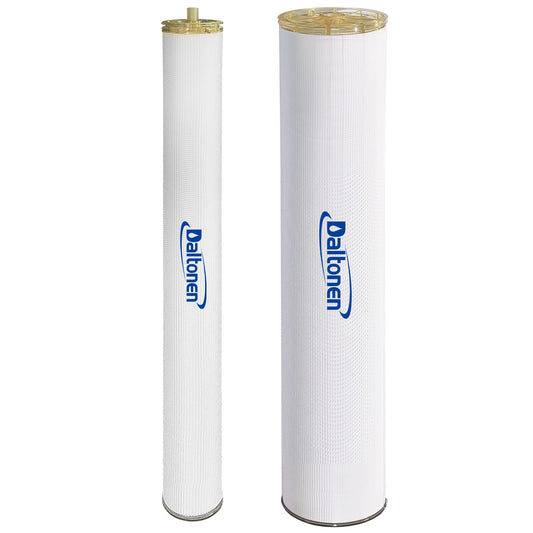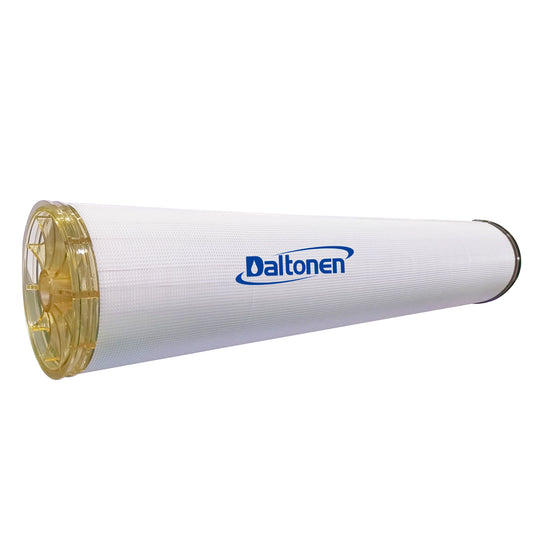Why Can DTRO Membranes Treat Leachate?
20 May 2025
1. Characteristics of Leachate
1.1 Composition of High-Concentration Pollutants
Leachate is a complex, high-concentration organic wastewater whose characteristics vary depending on factors such as the composition of waste, the duration of landfilling, and climatic conditions. It is mainly composed of the following high-concentration pollutants:
Organic Pollutants: Leachate contains a high concentration of organic matter, with chemical oxygen demand (COD) typically ranging from several thousand to tens of thousands of mg/L, and biochemical oxygen demand (BOD) is also relatively high. These organic substances mainly include humic substances, fatty acids, and protein decomposition products, which are generated during the decomposition of organic matter in waste during landfilling. For example, in some landfill leachates, the COD concentration can exceed 50,000 mg/L. These high-concentration organic pollutants pose a significant threat to water pollution. If discharged without treatment, they will severely consume the dissolved oxygen in water, causing it to turn black and foul-smelling, and affecting the survival of aquatic life.
Ammonia-Nitrogen: Leachate has a relatively high concentration of ammonia-nitrogen, generally ranging from several hundred to several thousand mg/L. Ammonia-nitrogen mainly originates from the decomposition of nitrogen-containing organic matter in waste, such as proteins and urea. High concentrations of ammonia-nitrogen are toxic to aquatic life and can affect the respiration and growth of fish and other aquatic organisms. For example, when the concentration of ammonia-nitrogen exceeds a certain limit, it can damage the gills of fish, affecting their normal respiratory function and even leading to death. In addition, ammonia-nitrogen in water can be converted into nitrite and nitrate, further affecting the ecological balance of water bodies.
Heavy Metals: Leachate also contains certain amounts of heavy metals, such as lead, mercury, cadmium, chromium, etc. These heavy metals mainly come from waste such as used batteries, electronic waste, and metal products. Heavy metals are difficult to degrade in water and have bioaccumulative properties, posing potential hazards to aquatic life and human health. For example, mercury is a highly toxic heavy metal that can accumulate in organisms through the food chain and eventually enter the human body, causing damage to the nervous system, kidneys, and other organs. Lead can affect the human hematopoietic and nervous systems, especially having a significant impact on the growth and development of children.

2. DTRO Membrane Technology Principle
2.1 Reverse Osmosis Mechanism
DTRO (Disc Tube Reverse Osmosis) membrane technology is an efficient membrane separation technology, and its reverse osmosis mechanism is the key principle for treating leachate.
Basic Principle: Reverse osmosis is a membrane separation process driven by a pressure difference. DTRO membranes separate water from pollutants in leachate by applying a pressure higher than the osmotic pressure of the solution. Water molecules pass through the membrane from the high-concentration leachate, while dissolved solutes (such as organic matter, ammonia-nitrogen, heavy metals, etc.) are retained on the other side of the membrane, thus achieving separation of water and pollutants. For example, in typical leachate treatment, DTRO membranes can achieve a water permeation rate of over 90% at an operating pressure of 1.5-5.0 MPa, with a retention rate of 95%-99% for pollutants such as COD and ammonia-nitrogen.
Membrane Structure and Characteristics: DTRO membranes are typically composed of multiple layers, including a support layer, a transition layer, and a separation layer. The support layer provides mechanical strength, the transition layer improves the surface properties of the membrane, and the separation layer is the key part that achieves reverse osmosis. The pore size of DTRO membranes is usually between 0.1 and 10 nanometers, which can effectively retain solutes with a molecular weight greater than 100-200 Daltons. This fine pore structure enables DTRO membranes to efficiently remove small-molecule organic matter and heavy metal ions from leachate.
Pollutant Retention Mechanism: For organic pollutants in leachate, DTRO membranes mainly retain them through physical sieving and adsorption. High-molecular-weight organic matter is directly retained due to its size being larger than the membrane pore size, while low-molecular-weight organic matter may be removed through adsorption on the membrane surface. For ammonia-nitrogen, the separation layer of the DTRO membrane has selective permeability, effectively preventing ammonia-nitrogen molecules from passing through. For heavy metal ions, the charged surface of the DTRO membrane can retain them through electrostatic repulsion. For example, studies have shown that the retention rate of lead ions in leachate treated by DTRO membranes can reach over 98%.
Influence of Operating Parameters: Operating pressure, temperature, and recovery rate are important factors affecting the reverse osmosis performance of DTRO membranes. Higher operating pressure can increase the water permeation rate, but excessive pressure may cause mechanical damage to the membrane and exacerbate membrane fouling. An increase in temperature generally increases the permeation rate of water molecules but has little effect on the retention performance of the membrane. Increasing the recovery rate will increase the concentration of pollutants on the membrane surface, thereby exacerbating membrane fouling and reducing membrane performance. Therefore, in practical applications, these operating parameters need to be optimized according to the specific characteristics of the leachate to ensure the efficient operation of the DTRO membrane. For example, in treating leachate with high COD concentration, the operating pressure is usually controlled at 3.0-4.0 MPa, the temperature is maintained at 20-30 degrees Celsius, and the recovery rate is controlled between 70% and 80% to achieve the best treatment effect and membrane service life.
3. Structural Advantages of DTRO Membranes
3.1 Open Flow Channel Design
The open flow channel design of DTRO membranes is one of its important advantages in treating leachate. This design effectively solves the common problems of membrane fouling and blockage in traditional membrane technologies when treating high-concentration, highly polluted wastewater.
Flow Channel Structural Features: The flow channel of DTRO membranes adopts an open structure, with a channel width of up to 12 millimeters, compared to the narrow flow channels of traditional spiral-wound membranes. This wide-channel design allows suspended particles and colloidal substances in leachate to pass through smoothly, reducing accumulation and blockage on the membrane surface. For example, when treating leachate containing a large amount of suspended solids, the open flow channel of DTRO membranes can effectively prevent the formation of a dense filter cake layer on the membrane surface, thereby extending the service life of the membrane.
Fluid Dynamics Advantages: The open flow channel design can generate a strong turbulent effect, which enhances the shear force of the fluid and further reduces the deposition of pollutants on the membrane surface. Studies have shown that turbulent shear force can strip pollutants from the membrane surface and reintroduce them into the fluid, thereby reducing membrane fouling. For example, in actual operation, the fluid shear force of DTRO membranes can be several times that of traditional spiral-wound membranes, resulting in a significantly lower flux decline rate when treating high-concentration leachate compared to traditional membranes.
Anti-Fouling Capability: Due to the reduced accumulation of pollutants on the membrane surface, DTRO membranes have a stronger anti-fouling capability. This not only extends the cleaning cycle of the membrane but also reduces the cleaning frequency and maintenance costs. For example, traditional spiral-wound membranes typically require chemical cleaning every 1-2 weeks when treating leachate, while the cleaning cycle of DTRO membranes can be extended to 12 months, greatly reducing the amount of cleaning work and the use of chemical agents.
Strong Adaptability: The open flow channel design enables DTRO membranes to adapt to leachate of different concentrations and compositions. Whether it is high-concentration leachate in the early stage or low-concentration leachate in the later stage, DTRO membranes can maintain stable treatment performance. For example, during different stages of a landfill, the water quality of leachate varies greatly, but the open flow channel design of DTRO membranes can effectively cope with these changes and ensure the stability of treatment results.
Practical Application Effects: In actual leachate treatment projects, the open flow channel design of DTRO membranes has been widely verified. For example, in a large-scale landfill leachate treatment project, the system operated stably after adopting DTRO membrane technology, with the effluent water quality meeting standards and the membrane service life reaching 3-5 years, significantly higher than the service life of traditional membrane technologies. This fully demonstrates the key role of the open flow channel design in improving the efficiency and reliability of DTRO membranes in treating leachate.
4. Treatment Effects of DTRO Membranes
4.1 Pollutant Removal Capability
DTRO membrane technology demonstrates excellent pollutant removal capabilities when treating leachate, effectively removing major pollutants such as organic matter, ammonia-nitrogen, and heavy metals, ensuring that the effluent water quality meets environmental standards.
Organic Matter Removal: DTRO membranes show significant removal effects on high-concentration organic matter in leachate. Studies have shown that under normal operating conditions, the removal rate of chemical oxygen demand (COD) by DTRO membranes can reach 95%-99%. For example, in a landfill leachate treatment project, the influent COD concentration was as high as 45,000 mg/L, and after treatment with DTRO membranes, the effluent COD concentration was reduced to below 500 mg/L, fully meeting the national relevant discharge standards. This high-efficiency removal capability is mainly due to the fine pore structure and physical sieving action of DTRO membranes, which can retain most high-molecular-weight organic matter and remove some low-molecular-weight organic matter through adsorption.
Ammonia-Nitrogen Removal: DTRO membranes also exhibit excellent removal performance for ammonia-nitrogen in leachate, with a removal rate generally between 90% and 95%. In practical applications, leachate with an influent ammonia-nitrogen concentration of around 2,000 mg/L can have its effluent ammonia-nitrogen concentration reduced to below 200 mg/L after treatment with DTRO membranes. This effect is mainly attributed to the selective permeability of the separation layer of DTRO membranes, which can effectively prevent ammonia-nitrogen molecules from passing through the membrane pores, thus achieving efficient ammonia-nitrogen retention.
Heavy Metal Removal: DTRO membranes have a strong retention capability for heavy metal ions in leachate. For example, the retention rate of heavy metal ions such as lead, mercury, and cadmium can reach 98%-99%. This is mainly due to the electrostatic repulsion of the membrane surface, which can effectively prevent charged heavy metal ions from passing through the membrane pores. In a leachate treatment project from an electronic waste landfill, the influent lead ion concentration was 10 mg/L, and after treatment with DTRO membranes, the effluent lead ion concentration was reduced to below 0.1 mg/L, far below the national discharge standard limit, fully demonstrating the high efficiency and reliability of DTRO membranes in removing heavy metals.
Practical Application Cases: In leachate treatment projects at multiple landfills and waste transfer stations, the application effects of DTRO membrane technology have been widely verified. For example, in a city landfill, DTRO membrane technology was used to treat leachate, and the system operated stably with long-term compliance of effluent water quality. After long-term monitoring, the concentrations of pollutants such as COD, ammonia-nitrogen, and heavy metals in the effluent were all far below the national discharge standards, and the membrane service life reached 3-5 years, showing good economic and environmental benefits.

5. Anti-Fouling Capability of DTRO Membranes
5.1 Self-Cleaning Function
The self-cleaning function of DTRO membranes is one of the key characteristics of their anti-fouling capability, which can effectively extend the service life of the membrane and maintain its high-efficiency separation performance.
Physical Self-Cleaning Mechanism: The open flow channel design of DTRO membranes creates strong turbulence on the membrane surface, and the shear force generated by this turbulence can strip pollutants from the membrane surface and reintroduce them into the fluid, thereby reducing the accumulation of pollutants on the membrane surface. For example, when treating leachate, the fluid shear force of DTRO membranes can be several times that of traditional spiral-wound membranes, resulting in a significantly lower flux decline rate when treating high-concentration leachate compared to traditional membranes.
Chemical Self-Cleaning Mechanism: The surface of DTRO membranes is usually chemically treated to be hydrophilic and anti-fouling. This hydrophilic surface can reduce the adsorption of organic matter and colloidal substances on the membrane surface, thereby reducing the risk of membrane fouling. For example, studies have shown that DTRO membranes modified to be hydrophilic can reduce the amount of pollutant adsorption by about 30%-50% when treating leachate with high-concentration organic matter, compared to unmodified membranes.
Extended Cleaning Cycle: Due to the self-cleaning function, the cleaning cycle of DTRO membranes can be significantly extended. Traditional spiral-wound membranes typically require chemical cleaning every 1-2 weeks when treating leachate, while the cleaning cycle of DTRO membranes can be extended to 12 months or even longer. This not only reduces the amount of cleaning work but also reduces the use of chemical agents, thereby reducing operating costs.
Practical Application Effects: In actual leachate treatment projects, the self-cleaning function of DTRO membranes has been widely verified. For example, in a large-scale landfill leachate treatment project, the system operated stably after adopting DTRO membrane technology, with the effluent water quality meeting standards and the membrane service life reaching 3-5 years, significantly higher than the service life of traditional membrane technologies. This fully demonstrates the key role of the self-cleaning function in improving the efficiency and reliability of DTRO membranes in treating leachate.
Tags:
